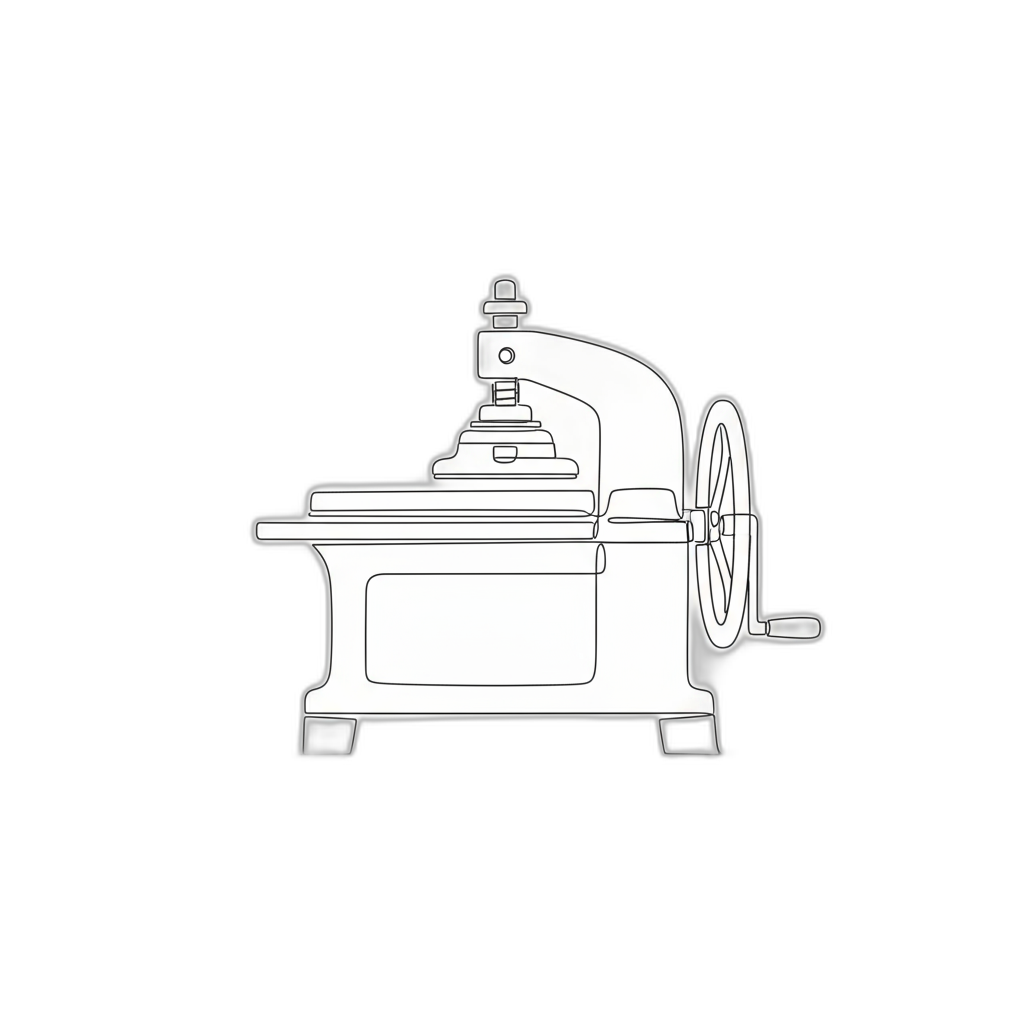Thank you! Your submission has been received!
Oops! Something went wrong while submitting the form.

Nationwide Service
Onsite or Online
USPAP-Compliant
IRS Qualified
DEFENSIBLE, USPAP-COMPLIANT APPRAISAL REPORTS — ACCEPTED BY 10,000+ ORGANIZATIONS






5-Star Service, Trusted & Loved by Hundreds
{{sectionName}}

This is some text inside of a div block.
This is some text inside of a div block.
Starts at
This is some text inside of a div block.
This is some text inside of a div block.
This is some text inside of a div block.
Starts at
This is some text inside of a div block.
{{feeRangeHeader}}
This is some text inside of a div block.
Most Household Goods engagements fall within this range. Larger or unusually complex collections may require a custom quote.
{{pricingByHeader}}
{{pricingBySubheader}}
This is some text inside of a div block.
This is some text inside of a div block.
This is some text inside of a div block.
What Drives Cost?
Number of items to be appraised
Number of items to be appraised
Number of items to be appraised
{{sectionName}}

This is some text inside of a div block.
This is some text inside of a div block.
Starts at
This is some text inside of a div block.
This is some text inside of a div block.
This is some text inside of a div block.
Starts at
This is some text inside of a div block.
{{feeRangeHeader}}
This is some text inside of a div block.
Most Household Goods engagements fall within this range. Larger or unusually complex collections may require a custom quote.
{{pricingByHeader}}
{{pricingBySubheader}}
This is some text inside of a div block.
This is some text inside of a div block.
This is some text inside of a div block.
What Drives Cost?
Number of items to be appraised
Number of items to be appraised
Number of items to be appraised
{{sectionName}}

This is some text inside of a div block.
This is some text inside of a div block.
Starts at
This is some text inside of a div block.
This is some text inside of a div block.
This is some text inside of a div block.
Starts at
This is some text inside of a div block.
{{feeRangeHeader}}
This is some text inside of a div block.
Most Household Goods engagements fall within this range. Larger or unusually complex collections may require a custom quote.
{{pricingByHeader}}
{{pricingBySubheader}}
This is some text inside of a div block.
This is some text inside of a div block.
This is some text inside of a div block.
What Drives Cost?
Number of items to be appraised
Number of items to be appraised
Number of items to be appraised
{{sectionName}}

This is some text inside of a div block.
This is some text inside of a div block.
Starts at
This is some text inside of a div block.
This is some text inside of a div block.
This is some text inside of a div block.
Starts at
This is some text inside of a div block.
{{feeRangeHeader}}
This is some text inside of a div block.
Most Household Goods engagements fall within this range. Larger or unusually complex collections may require a custom quote.
{{pricingByHeader}}
{{pricingBySubheader}}
This is some text inside of a div block.
This is some text inside of a div block.
This is some text inside of a div block.
What Drives Cost?
Number of items to be appraised
Number of items to be appraised
Number of items to be appraised
{{pricingSubheader}}
This is some text inside of a div block.
This is some text inside of a div block.
Starts at
This is some text inside of a div block.
This is some text inside of a div block.
This is some text inside of a div block.
Starts at
This is some text inside of a div block.
{{feeRangeHeader}}
This is some text inside of a div block.
Most Household Goods engagements fall within this range. Larger or unusually complex collections may require a custom quote.
{{pricingByHeader}}
{{pricingBySubheader}}
This is some text inside of a div block.
This is some text inside of a div block.
This is some text inside of a div block.
What Drives Cost?
Number of items to be appraised
Number of items to be appraised
Number of items to be appraised
How the Process Works
1
Appraisal Request
Submit estimate or list of items for our review
2
Quote Issued
We'll share a flat fee quote for your approval
3
Kickoff & Intake
Submit details on all of your items for our review
4
Research & Analysis
We'll conduct detailed research and prepare a written USPAP-compliant report
5
Report Delivery
Delivery of your report and supporting documents (e.g., signed IRS Form 8283) by email
Your Appraiser Search Ends Here
Your Appraiser Search Ends Here
.avif)

Nationwide Coverage – Appraisals Anywhere in the US
Our extensive network of professional appraisers ensures you receive accurate, trusted valuations wherever you are.

Get it done Onsite or Online
Choose between a seamless online process—preferred by most clients—or in-person service for complex assignments.

Any Asset, Covered
Nationwide appraisers for every asset— from buildings & businesses to vehicles & valuables.

Defensible for Any Purpose
For donations, estates, insurance, and more—our USPAP-compliant reports are built to meet the highest standards.
No items found.
A lithograph appraisal represents a meticulous professional assessment of a printed artwork created through the lithographic technique, a method developed in the late 18th century involving image creation on a flat surface using a greasy medium. This specialized evaluation serves as a critical tool for artists, collectors, and institutions seeking to determine the authentic value and significance of lithographic prints within the complex art market.
The comprehensive appraisal process involves intricate steps designed to provide a nuanced understanding of the artwork's worth. Expert appraisers begin by carefully examining the lithograph's fundamental characteristics, including artist identification, edition details, and authenticity markers. They conduct a thorough condition assessment, scrutinizing the print for physical indicators that might impact its market value, such as paper quality, preservation state, and potential damage.
Market research forms a crucial component of the appraisal, with professionals analyzing recent sales data, auction records, and current market trends specific to similar lithographic works. This approach allows for a dynamic and contextually informed valuation that considers the broader artistic landscape and collector interest.
The appraiser's expertise plays a pivotal role in interpreting both the artistic and historical significance of the lithograph. Trained professionals bring deep knowledge that extends beyond surface-level assessment, providing insights into the print's provenance, cultural context, and potential value trajectory.
Ultimately, the appraisal concludes with a detailed report that synthesizes all gathered information, presenting a comprehensive document that can be utilized for various purposes, including insurance documentation, estate planning, and potential resale considerations. This methodical approach ensures that lithographic artworks are evaluated with the highest level of professional scrutiny and precision.
The comprehensive appraisal process involves intricate steps designed to provide a nuanced understanding of the artwork's worth. Expert appraisers begin by carefully examining the lithograph's fundamental characteristics, including artist identification, edition details, and authenticity markers. They conduct a thorough condition assessment, scrutinizing the print for physical indicators that might impact its market value, such as paper quality, preservation state, and potential damage.
Market research forms a crucial component of the appraisal, with professionals analyzing recent sales data, auction records, and current market trends specific to similar lithographic works. This approach allows for a dynamic and contextually informed valuation that considers the broader artistic landscape and collector interest.
The appraiser's expertise plays a pivotal role in interpreting both the artistic and historical significance of the lithograph. Trained professionals bring deep knowledge that extends beyond surface-level assessment, providing insights into the print's provenance, cultural context, and potential value trajectory.
Ultimately, the appraisal concludes with a detailed report that synthesizes all gathered information, presenting a comprehensive document that can be utilized for various purposes, including insurance documentation, estate planning, and potential resale considerations. This methodical approach ensures that lithographic artworks are evaluated with the highest level of professional scrutiny and precision.
Lithograph appraisers are specialized professionals who evaluate these unique artworks through diverse professional lenses. These experts possess distinct skills and knowledge that enable comprehensive assessments of lithographs across various contexts.
Fine art appraisers focus on artistic and monetary valuation, leveraging deep art history backgrounds to analyze an artwork's aesthetic merit, cultural significance, and market potential. Their evaluations consider the artist's reputation, historical context, technical quality, and current collector demand.
Antique appraisers concentrate on historical lithographs, typically examining works over a century old. Their expertise centers on understanding provenance, cultural relevance, preservation state, and historical importance. These professionals play critical roles in estate assessments, museum acquisitions, and historical documentation.
Auction house specialists bring specialized market knowledge, tracking contemporary trends and collector interests. They develop precise valuations that reflect current market dynamics, helping determine appropriate pricing strategies for lithographic works in competitive sales environments.
Insurance appraisers conduct meticulous evaluations aimed at establishing precise monetary values for protection purposes. Their detailed assessments provide comprehensive documentation that supports accurate insurance coverage, protecting collectors' investments against potential loss or damage.
Historical appraisers offer unique insights into lithographs representing significant cultural, political, or social moments. They examine works through a scholarly lens, understanding how these artworks capture and communicate historical narratives beyond their aesthetic qualities.
Each appraiser type contributes distinctive expertise, ensuring comprehensive understanding and accurate valuation of lithographic artworks across different professional contexts.
Fine art appraisers focus on artistic and monetary valuation, leveraging deep art history backgrounds to analyze an artwork's aesthetic merit, cultural significance, and market potential. Their evaluations consider the artist's reputation, historical context, technical quality, and current collector demand.
Antique appraisers concentrate on historical lithographs, typically examining works over a century old. Their expertise centers on understanding provenance, cultural relevance, preservation state, and historical importance. These professionals play critical roles in estate assessments, museum acquisitions, and historical documentation.
Auction house specialists bring specialized market knowledge, tracking contemporary trends and collector interests. They develop precise valuations that reflect current market dynamics, helping determine appropriate pricing strategies for lithographic works in competitive sales environments.
Insurance appraisers conduct meticulous evaluations aimed at establishing precise monetary values for protection purposes. Their detailed assessments provide comprehensive documentation that supports accurate insurance coverage, protecting collectors' investments against potential loss or damage.
Historical appraisers offer unique insights into lithographs representing significant cultural, political, or social moments. They examine works through a scholarly lens, understanding how these artworks capture and communicate historical narratives beyond their aesthetic qualities.
Each appraiser type contributes distinctive expertise, ensuring comprehensive understanding and accurate valuation of lithographic artworks across different professional contexts.
Lithographs represent more than mere decorative pieces; they are valuable assets that require careful evaluation and understanding. Professional appraisals offer critical insights into the artwork's financial and historical significance across multiple domains.
Tax planning benefits from accurate appraisals, especially for charitable donations exceeding $5,000, where documented valuations substantiate potential tax deductions. Estate planning relies on precise assessments to ensure equitable distribution of art collections and proper valuation for inheritance considerations.
Insurance protection demands comprehensive documentation of artwork value. A current, professional appraisal provides essential evidence for replacement or compensation in cases of loss, damage, or theft. This documentation ensures collectors receive fair market value representations of their lithographic investments.
Legal proceedings frequently require objective third-party valuations during complex scenarios such as divorce settlements, inheritance disputes, or business asset assessments. An authoritative appraisal offers an impartial perspective that can efficiently resolve potential ownership or value-related conflicts.
Investment strategies benefit substantially from professional appraisals. These evaluations provide nuanced insights into market trends, potential appreciation, and the overall financial positioning of lithographic collections. Collectors and investors gain strategic understanding of their art assets' current and potential future value.
Understanding a lithograph's true worth extends beyond monetary considerations. These professional assessments capture the intricate details of artistic provenance, historical significance, and market dynamics, transforming art ownership into a more informed and strategic endeavor.
Tax planning benefits from accurate appraisals, especially for charitable donations exceeding $5,000, where documented valuations substantiate potential tax deductions. Estate planning relies on precise assessments to ensure equitable distribution of art collections and proper valuation for inheritance considerations.
Insurance protection demands comprehensive documentation of artwork value. A current, professional appraisal provides essential evidence for replacement or compensation in cases of loss, damage, or theft. This documentation ensures collectors receive fair market value representations of their lithographic investments.
Legal proceedings frequently require objective third-party valuations during complex scenarios such as divorce settlements, inheritance disputes, or business asset assessments. An authoritative appraisal offers an impartial perspective that can efficiently resolve potential ownership or value-related conflicts.
Investment strategies benefit substantially from professional appraisals. These evaluations provide nuanced insights into market trends, potential appreciation, and the overall financial positioning of lithographic collections. Collectors and investors gain strategic understanding of their art assets' current and potential future value.
Understanding a lithograph's true worth extends beyond monetary considerations. These professional assessments capture the intricate details of artistic provenance, historical significance, and market dynamics, transforming art ownership into a more informed and strategic endeavor.
In today's digital landscape, online lithograph appraisals have become a sophisticated and accessible method for art owners seeking professional valuation. Modern appraisal services leverage advanced digital platforms to deliver comprehensive and precise assessments remotely, maintaining rigorous professional standards.
The online appraisal process typically involves submitting detailed, high-resolution photographs that capture multiple perspectives of the artwork. Clients are encouraged to provide images that showcase critical details such as signatures, unique markings, and potential condition variations. Accompanying these visual submissions, appraisers request comprehensive background information including the lithograph's provenance, artist details, historical sale records, and any previous professional evaluations.
Interactive options now extend beyond static image submissions. Live video consultations using platforms like Zoom or Google Meet enable direct communication between clients and professional appraisers. These real-time interactions allow for immediate clarification, detailed examination, and nuanced discussion about the artwork's potential value and historical significance.
The digital approach eliminates traditional geographical constraints, connecting art owners with specialized experts regardless of physical location. This method not only streamlines the appraisal process but also provides unprecedented convenience and accessibility for collectors and art enthusiasts alike. By embracing technological innovations, online lithograph appraisals offer a flexible, efficient, and professional solution for obtaining accurate artwork valuations.
The online appraisal process typically involves submitting detailed, high-resolution photographs that capture multiple perspectives of the artwork. Clients are encouraged to provide images that showcase critical details such as signatures, unique markings, and potential condition variations. Accompanying these visual submissions, appraisers request comprehensive background information including the lithograph's provenance, artist details, historical sale records, and any previous professional evaluations.
Interactive options now extend beyond static image submissions. Live video consultations using platforms like Zoom or Google Meet enable direct communication between clients and professional appraisers. These real-time interactions allow for immediate clarification, detailed examination, and nuanced discussion about the artwork's potential value and historical significance.
The digital approach eliminates traditional geographical constraints, connecting art owners with specialized experts regardless of physical location. This method not only streamlines the appraisal process but also provides unprecedented convenience and accessibility for collectors and art enthusiasts alike. By embracing technological innovations, online lithograph appraisals offer a flexible, efficient, and professional solution for obtaining accurate artwork valuations.
Sorry! We haven't published any articles on this topic yet.
BEST-IN-CLASS APPRAISERS, CREDENTIALED BY:





